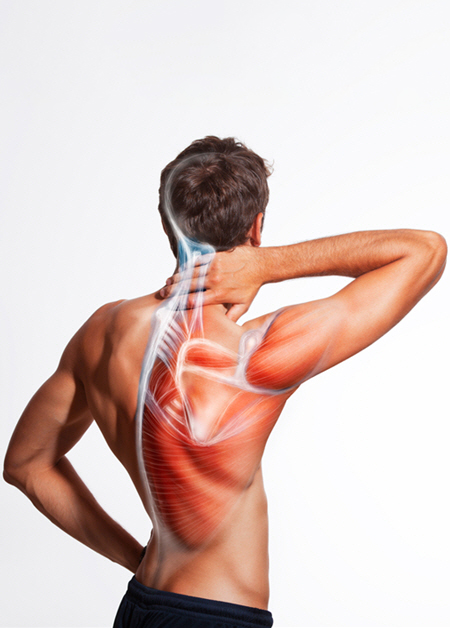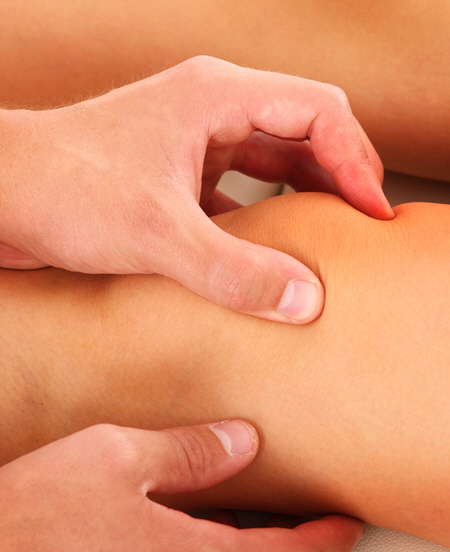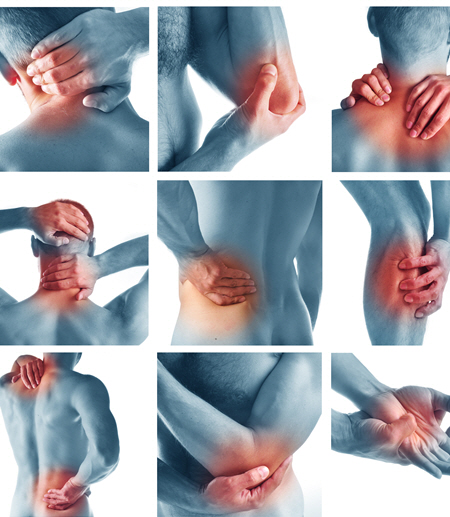 Medical Massage
Medical Massage
Medical Massage Therapy is an alternative, outcome-based treatment for some of the less traumatic dysfunctions we have with our skeletal and joint systems, such as loss of function, pain with movement, limited range of motion, and structural imbalances.
This type of therapy works to alleviate the muscle aches and bodily pains associated with joint pain, and it also works to restore balance to these physical structures.
Instead of injections, medications, or even surgery, doctors are now recognizing Medical Massage Therapy as a first choice to treat soft tissue issues and injuries.
Medical Massage is frequently related to a medical diagnosis that the client has received from their doctor. This can include a targeted part of the body with pain or dysfunction or entail a health issue focus.
While addressing a specific problem or condition that the patient presents, the practitioner will do a thorough assessment, implement a treatment plan, and evaluate for measurable outcomes. Patients can be seen with or without an MD order.
 Myofascial Release
Myofascial Release
Myofascial release (MFR) is a type of bodywork that focuses on the connective tissue or fascia of the body. Fascia wraps most structures within the human body, including muscle. Fascia supports and protects these structures, binding some together while permitting others to slide smoothly over each other.
Fascia is designed to be elastic and move freely with muscles and bones. Injury, stress, work-related repetitive movements, and the effects of aging can cause fascia to lose its elasticity and become shorter, tighter, and more dense. Tightened fascia pulls our muscles and skeleton out of proper alignment and posture, which can cause pain, discomfort, and fatigue.
MFR can treat skeletal muscle immobility and pain by relaxing contracted muscles, improving blood and lymphatic circulation, and stimulating the stretch reflex in muscles.
Osteopathic theory proposes that this soft tissue can become restricted due to overuse, trauma, infectious agents, or inactivity, often resulting in pain, muscle tension, and corresponding diminished blood flow.
 Proprioceptive Neuromuscular Facilitation (PNF)
Proprioceptive Neuromuscular Facilitation (PNF)
PNF is a stretching technique utilized to improve muscle elasticity and has been shown to have a positive effect on certain outcome measures, such as passive range of motion (PROM), active range of motion (AROM), peak torque, and muscular strength.
This review is important for the justification of its usage within therapeutic and athletic settings in order to rehabilitate injuries by gaining AROM and PROM or improving performance. In clinical settings, PNF is already utilized by therapists to restore functional range of motion (ROM) and increase strength in patients who have sustained soft tissue damage or received invasive surgeries.
Initially, the approach was developed to treat patients with neurological dysfunctions. PNF integrates the use of pattern specific movements and applies neurophysiological principles of the sensory/motor system to manual evaluation and treatment of the neuromuscular skeletal system. PNF provides the therapist with an efficient means for evaluating and treating neuromuscular and structural dysfunctions.
Trigger Point Therapy
Myofascial trigger points are painful, tense areas that can be found anywhere on the body and are one of the most common causes for chronic musculoskeletal pain. Trigger Point Therapy uses strong manual pressure and can be uncomfortable or somewhat painful for the patient. However, this pain is usually regarded as a “good and releasing pain.”
There are several trigger point techniques. Some focus directly on the trigger point and taut band, while others are release techniques that affect a larger area of the muscle and its fascia.
Trigger Point Therapy includes specific manipulations of the muscles, fascia and connective tissues. This helps to promote healing and reduce pain. The more accurate the treatment is on the affected trigger point, the better the results.
 Manual Lymphatic Drainage (MLD)
Manual Lymphatic Drainage (MLD)
MLD is used in the treatment of lymphostatic edema, which is characterized by insufficient transport capacity of the lymphatic vessels under normal lymphatic load. The classic indication is lymphedema (e.g. after breast cancer surgery).
The lymphatic system is to be activated by various grip techniques, primarily by improving the pumping capacity of the lymphatic vessels. MLD does not result in increased blood flow, as in traditional massage. It is intended to help decongest the tissue in pain control, even before and after surgeries. In some cases, pain medication can be reduced, and the healing process is faster.
Further indications are all conditions associated with swelling (e.g., strains, sprains, surgeries), as well as burns, whiplash, and migraines.
In the case of advanced lymphatic diseases (congestion), this therapy is supplemented with compression bandages or custom-made compression stockings.
This Therapy, which was developed in the 1960s, has been taught at German Physiotherapy Schools ever since. The application is only permitted to practitioners with the appropriate additional training in Manual Lymphatic Drainage at an approved teaching institute. Manual Lymphatic Drainage is widespread in Germany and Austria but is used less frequently in the USA.
 Neuro-Muscular Therapy (NMT)
Neuro-Muscular Therapy (NMT)
NMT is a precise, thorough examination and treatment of the body’s soft tissues using regionally oriented protocols built upon a science-based foundation and guided by clinical evidence.
NMT considers perpetuating factors that may be associated with the client’s complaints, most of which can be easily grouped under three general headings of biomechanical, biochemical, and psycho-social factors, with the interface between these being profoundly related. A synergistic effect – often with significant relief – is obtained when all three categories are addressed. This may require a multidisciplinary approach.
NMT is highly effective for clients who present with chronic pain and is often successful in reducing or eliminating even longstanding painful conditions. Some of the techniques also can be applied to acute injuries and for post-surgical care; many help improve performance in sport or dance and prevent injuries due to these activities.
Visceral Manipulation
Visceral Manipulation is used to locate and solve problems throughout the body. It encourages your own natural mechanisms to improve the functioning of your organs, dissipate the negative effects of stress, enhance mobility of the musculoskeletal system through the connective tissue attachments, and influence general metabolism. These gentle manipulations can potentially improve the functioning of individual organs and the structural integrity of the entire body.
Harmony and health exist when motion is free and not labored, depressed, or conflicting with neighboring structures and their mobility. Visceral Manipulation assesses the dynamic functional actions as well as the somatic structures that perform individual activities. It also evaluates the quality of the somatic structures and their functions in relation to an overall harmonious pattern, with motion serving as the gauge for determining quality.
Due to the delicate and often highly reactive nature of the visceral tissues, gentle force precisely directed reaps the greatest results. As with other methods of manipulation that affect the body deeply, Visceral Manipulation works only to assist the forces already at work. Because of that, trained therapists can be sure of benefiting the body rather than adding further injury or disorganization.


